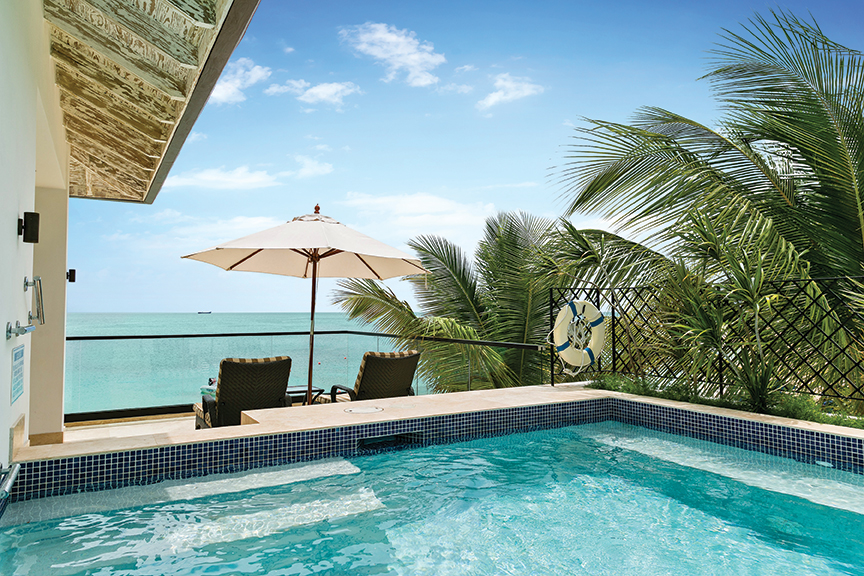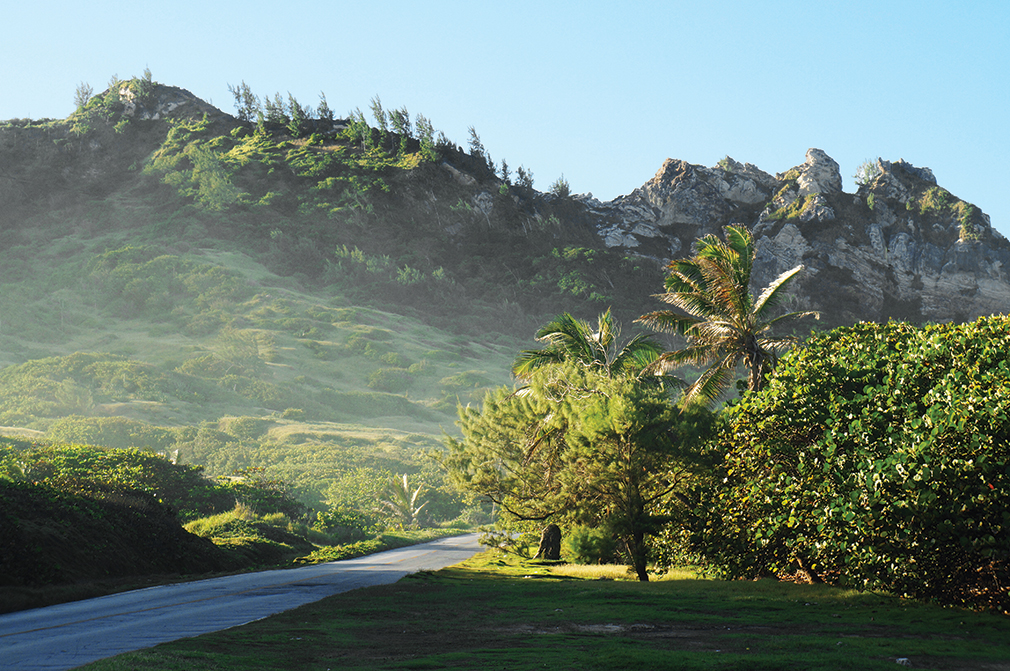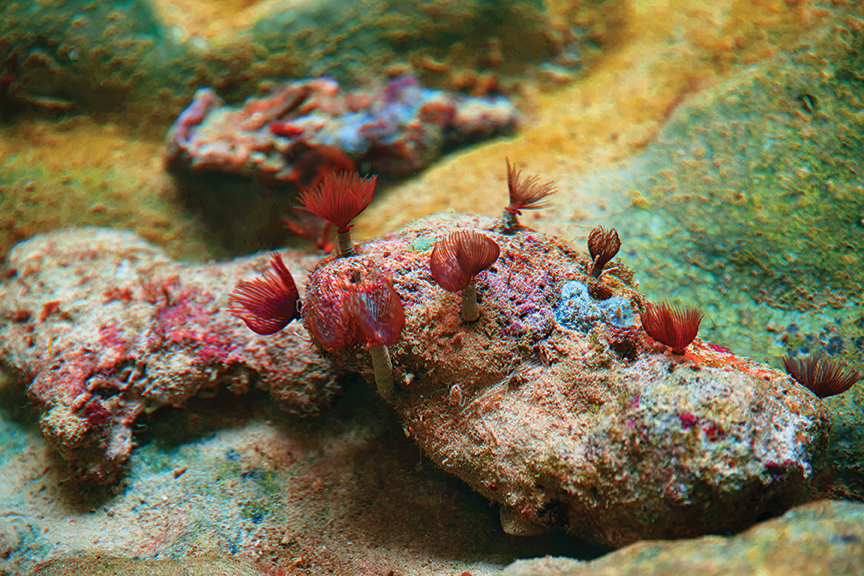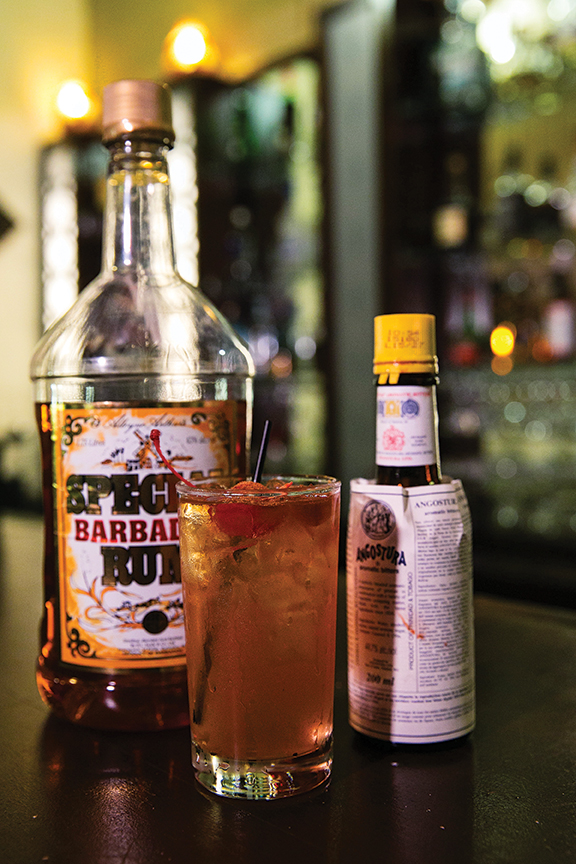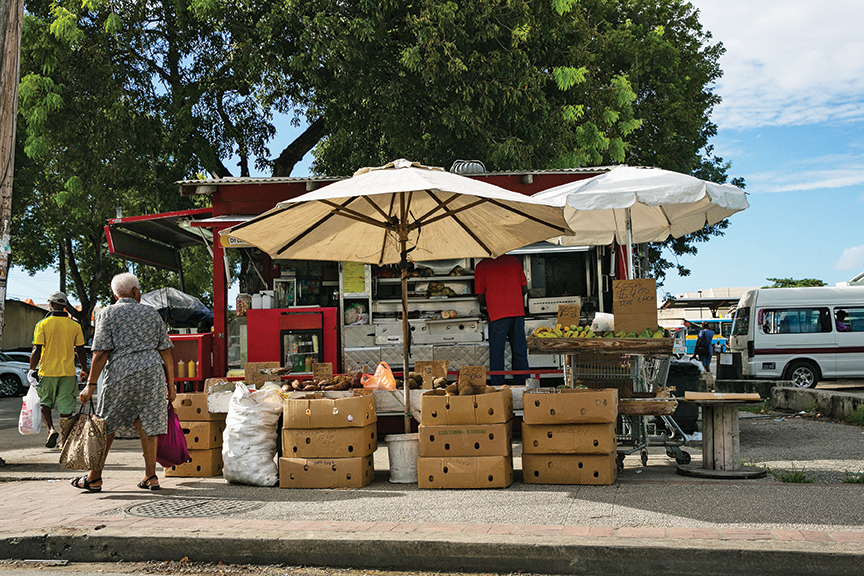Barbados: Yours to Discover
John and Zeke are my shepherds. John, my tour guide at Animal Flower Cave, is showing me around the scenic property at the northern tip of Barbados. But Zeke is an actual shepherd today, guiding a group of five resident docile sheep and goats past the open-air seating area built with ballast stone and pine.
— By Amie Watson
— Photography: Kenneth Theysen
Two young children stare at Jimmy (a goat) and Frisky (a sheep) – both twice their size – as Zeke walks the animals to the top of coral steps. There, they graze happily while visitors descend to the sea cave below to view the animals after which the cave is actually named: sea anemones that live in pristine pools among gnarled, coral rocks coloured green and brown by algae and time.
“It’s like in Nemo”, says John English, as he crouches down and tickles the tips of a tube anemone’s yellow tendrils, making it disappear into the safety of its tube. That isn’t the real name of my formerly British, now Bajan guide, but it’s what everyone’s called him since he started leading visitors down into the caves, years ago.
Barbados doesn’t lack panoramic views, perfect sunsets or baby blue ocean, whether it’s from the personal plunge pool of the opulent Curlew suite at The Sandpiper, the beachside patio of Juma’s Restaurant in Speightstown or Liv’s Lookout at the Flower Forest. But the view from the Animal Flower Cave is particularly stunning. Visitors wade or swim into the shallow, secluded pool for a more intimate, coral-framed version of the panoramic view available from the restaurant above. Down below, the view is nothing but blue sky and rolling sea. The surprising silence contrasts the cacophony up above: waves crashing into water-pummelled rock long ago ripped from the ocean by the collision of tectonic plates.
Unlike the calm beaches of the West Coast, here the land is more rugged. Manuel Ward, the third-generation owner of Animal Flower Cave, says it reminded his grandmother of her home in Cape Breton, Nova Scotia, on the East Coast of Canada. She loved it so much that the previous owner, a friend of Ward’s grandparents, gave the land to the couple as a wedding gift – a less generous gift than you might think since not much grows in decomposed coral stone.
The Scotland District of the island, however, is a world apart – a literal sea-change caused by those same tectonic plates pushing fertile clay up and out of its ocean bed. In that rich soil, royal palms grow three feet a year, while further south on the East Coast, the self-sustaining farm where Chef Jules Daghorn of Juma’s Restaurant grew up was known for its giant carrots and orchard the size of a football stadium.
In Barbados, understanding the land is part of understanding the culture. It has and continues to shape the people – what they eat, where they live, what they love to do – as much as the country’s British colonial history. A weekend without a beach or pudding and souse isn’t much of a weekend. Rum might as well be a constitutional right. And you can pickle everything from fish to pork to breadfruit – usually with lime, cucumber and parsley.
At the Saturday Cheapside Market in Bridgetown, farmers sell fresh okra and bright orange pumpkin for stews and soup, and green-skinned, starchy plantains just begging to be deep-fried. Rows are lined with dark purple cassava, sweet potato and other sweet tubers. Scotch bonnet peppers are pre-packed into bags, making you wonder how someone could use all ten of the mouth-scorching fruit in a week.
But I don’t see ackee at the market. Barbadian ackee fruit, called guinep in Jamaica, are deliciously sweet-and-sour lychee-like fruit and have nothing to do with Jamaican ackee, traditionally cooked with saltfish. Peeling the Bajan ackee’s green skin reveals white, translucent flesh around a large pit. When in season, they’re hawked by the bunch to drivers on the street, much like the fresh, cold coconut juice sold from the back of a truck by the cricket field across from The Sandpiper.
Whether it’s exploring a sea cave, sipping a rum punch at one of the island’s reputable distilleries, or enjoying the freshly grilled catch of the day on a rugged coral cliff as the sun sets, there’s a lot to discover in Barbados – and cultural education has never been so delicious.
Amie Watson
is a Montreal-based food and travel writer.
www.multiculturiosity.com
@MissWattson


